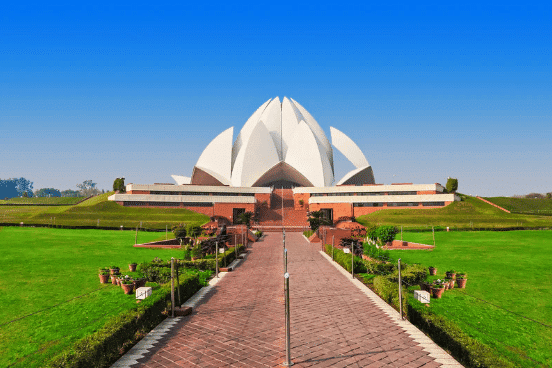Delhi - 1 Class 3 Worksheet SST
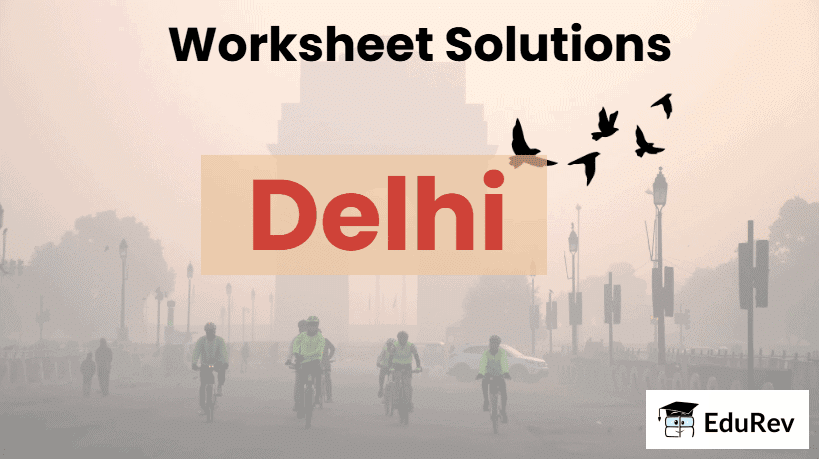
Q1: Multiple-Choice Questions (MCQs)
(i) Which of these is not one of the world heritage sites?
(a) Qutub Minar
(b) Humayun’s Tomb
(c) Red Fort
(d) Lotus Temple
Ans: (d) Lotus Temple
Delhi's Lotus Temple, or the Bahai House of worship, is not considered for a UNESCO world heritage site.
(ii) The India International Trade Fair is held in
(a) Mumbai
(b) Chennai
(c) New Delhi
(d) Kolkata
Ans: (c) New Delhi
It is a premier event organized by the India Trade Promotion Organization, the nodal trade promotion agency of the Government of India. The event is held between 14–27 November every year at Pragati Maidan, New Delhi, India.
(iii) Which river flows through Delhi?
(a) Ganga
(b) Yamuna
(c) Brahmaputra
(d) Godavari
Ans: (b) Yamuna
The Yamuna River flows through Delhi, providing water to the capital.
(iv) What is the main reason why Delhi is considered a highly polluted city?
(a) Excessive rainfall
(b) Dense population and overcrowding
(c) Limited industrial activities
(d) Strict environmental regulations
Ans: (b)
Delhi is densely populated and almost every place is overcrowded, leading to high pollution levels.
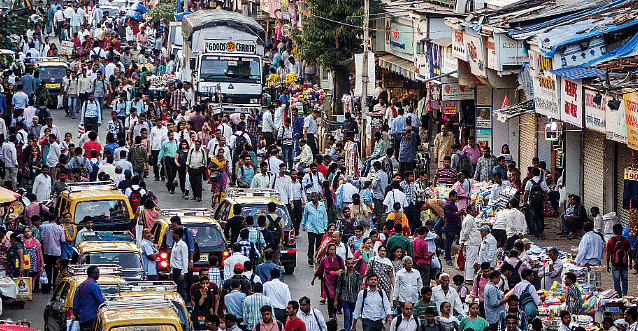
(v) Who built the present Delhi in the 17th Century and what was it known as during that time?
(a) Yudhistir; Indraprastha
(b) Raja Dhilu; Dilli
(c) King Sahajahan; Sahajahanabad
(d) British; New Delhi
Ans: (c) King Sahajahan; Sahajahanabad
King Sahajahan built the present Delhi in the 17th Century, and it was known as Sahajahanabad.
Q2: Fill in the blanks
(i) Two famous historical monuments in Delhi are __________ and _________.
Ans: Two famous historical monuments in Delhi are Qutab Minar and India Gate.
(ii) ______________ is a popular means of transport in Delhi.
Ans: Metro is a popular means of transport in Delhi.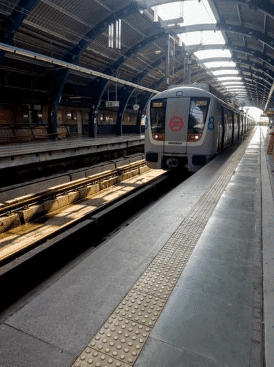
(iii) Delhi is a __________ city where multiple languages, including English, Hindi, Punjabi, and Urdu, are spoken.
Ans: Delhi is a cosmopolitan city where multiple languages, including English, Hindi, Punjabi, and Urdu, are spoken.
(iv) The present site of Delhi was made capital by various kings, and its name was originally __________.
Ans: The present site of Delhi was made capital by various kings, and its name was originally Indraprastha.
(v) Delhi gets about __________ mm of rains during the rainy season.
Ans: Delhi gets about 650 mm of rains during the rainy season.
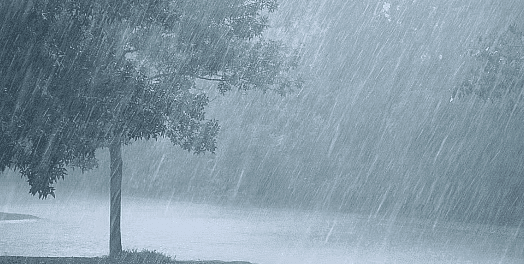
Q3: Match the following
 Ans:
Ans:

Explanation:
- Monument is related to Red Fort, which is a historical monument in Delhi.
- Water Supply is managed by Delhi Jal Board, which provides water to the city.
- Transport is related to Metro Rail, a common form of transport in Delhi.
- Museum is related to Nehru Planetarium, a famous place for learning about science and astronomy.
Q4: Answer the following questions:
(i) What is the importance of India Gate in Delhi?
Ans: India Gate is a war memorial built to honor the soldiers who died during World War I.
(ii) How many monuments in Delhi are UNESCO World Heritage Sites?
Ans: Delhi has several UNESCO World Heritage Sites, including Red Fort and Qutub Minar.
(iii) What is the significance of Qutub Minar?
Ans: Qutub Minar is a UNESCO World Heritage Site, built by Qutb-ud-Din Aibak in the 12th century, and it is one of the tallest brick minarets in the world.
(iv) Who was the first emperor to rule Delhi?
Ans: The first emperor to rule Delhi was Prithviraj Chauhan.
(v) How do people in Delhi celebrate Diwali?
Ans: People in Delhi celebrate Diwali by decorating their homes with diyas (lamps), lighting fireworks, and spending time with family
Q5: Imagine
Imagine you are a tour guide for a group of visitors in Delhi. What three places would you take them to, and why?
Ans: As a tour guide, I would take them to:
- Red Fort: It's a beautiful fort with a rich history, built by Emperor Shah Jahan.
- Qutub Minar: It’s a tall, amazing structure made of red sandstone that tells the story of India’s past.
- India Gate: A beautiful place to remember the soldiers who fought for India. It's also great for a fun picnic!
This is a reference answer. Student can make their own also.
FAQs on Delhi - 1 Class 3 Worksheet SST
| 1. What is the Delhi Class 3 exam? |  |
| 2. How can I prepare for the Delhi Class 3 exam? |  |
| 3. What subjects are included in the Delhi Class 3 exam? |  |
| 4. Are there any specific study materials available for the Delhi Class 3 exam? |  |
| 5. How is the Delhi Class 3 exam conducted? |  |

